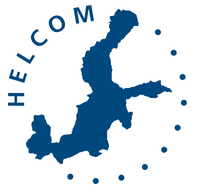The cooperation between HELCOM and the EU Strategy for the Baltic Sea Region (EUSBSR) is expected to smoothen. For the first time, a dedicated session with the representatives from relevant EUSBSR Priority Areas and Horizontal Actions was successfully organized as a part of this week’s of HELCOM Heads of Delegation representing all the Baltic coastal countries as well as the EU. The full meeting is now available online, listing all the issues addressed and decided on in the meeting for the benefit of the Baltic marine environment.Improving cooperation in practice was the key topic of HELCOM session with representatives from the EU Strategy for the Baltic sea Region. Photo: Dodik Putro.Concrete proposals on why and how to improve the synergies between HELCOM and EUSBSR have been listed in the meeting outcome. The shared goal would be to better communicate the policy directions and needs by HELCOM, which then can be met with and supported by the EUSBSR work and projects. The meeting recommended practical ways for better use of the expertise of HELCOM groups. Using the existing forums, co-chairing, back-to-back meetings, opportunity for involving Russian experts, and helping HELCOM countries in tapping into EU funding were also mentioned as practical solutions for more effective regional cooperation. The timing for the joint HELCOM-EUSBSR meeting was particularly adept, as the HELCOM streamlining process has been completed few months ago while the Action Plan of the EUSBSR is currently under revision, expecting launch at the Strategy’s Annual Forum in mid-June 2015. As per other results of the Heads of Delegation meeting, HELCOM “sub-hot spot” No. 18.1 “Construction of new sewer connections” was deleted, concerning the waste water treatment system of St. Petersburg. A large-scale environmental project for the construction of the northern tunnel collector of the city of five million inhabitants was finalized in October 2013, preventing the discharge of untreated waste water into the Neva River by approximately 122 million m3 per year. Since then, 98.4% of waste water has been estimated as adequately treated in St. Petersburg. HELCOM originally included 162 of the region’s significant sources of pollution, out of which over two thirds have since been mitigated. Adequate reception for passenger ships was also negotiated by the Meeting, being part of the larger process of complying with the Baltic’s status as a sewage special area as decided by the International Maritime Organisation (IMO) in 2011. The consultations for a joint notification on the adequacy of ports’ reception facilities will continue via correspondence early next year. The meeting was held on 9-10 December 2014 and it was chaired by the current Estonian Chair of HELCOM, Mr. Harry Liiv. .. * * * Note for editorsThe European Union Strategy for the Baltic Sea Region () is the first macro-regional strategy in Europe. It aims at reinforcing cooperation within this large region in order to face several challenges by working together as well as promoting a more balanced development in the area. The Strategy also contributes to major EU policies and reinforces the integration within the area. The (HOD) of HELCOM usually meet few times a year. While the Annual Meeting of HELCOM remains the Commission’s highest decision-making body, the Heads of Delegation have a relatively high authority over most major issues. The working structure of HELCOM, supported and administered by the Secretariat, comprises of the Helsinki Commission, the Heads of Delegation, and eight main working groups, together with tens of expert groups, correspondence groups and projects. The Baltic Marine Environment Protection Commission, usually referred to as , is an intergovernmental organization of the nine Baltic Sea coastal countries and the European Union working to protect the marine environment of the Baltic Sea from all sources of pollution and to ensure safety of navigation in the region. Since 1974, HELCOM has been the governing body of the ‘Convention on the Protection of the Marine Environment of the Baltic Sea Area’, more commonly known as the Helsinki Convention. * * * For more information, please contact:Johanna Laurila Information Secretary HELCOM Tel: +358 40 523 8988 Skype: helcom70 E-mail: johanna.laurila(at)helcom.fi
For the first time, a dedicated session with the representatives from relevant EUSBSR areas was organized as a part of this week’s meeting of HELCOM Heads of Delegation.
